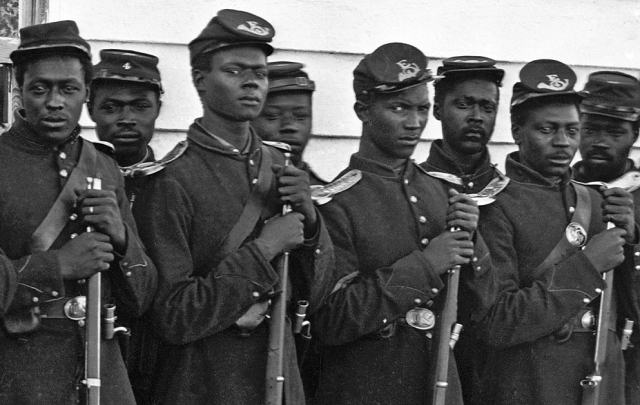Re: Remembering Pvt. Louis Perez
<font size="5"><center>
Commentary: A day to remember
the price of freedom</font size><font size="4">
For those who wear, or have worn, the uniform and those
who love them, it's a time to remember those who've fallen </font size></center>
McClatchy Newspapers
By Joseph L. Galloway
May 22, 2009
Memorial Day is upon us, and for most Americans that means the first holiday weekend of a new summer. For most, it's time to dust off the barbecue pit or head to the nearest beach or hit the mall for the big sales.
For those who wear, or have worn, the uniform and those who love them, however, it means something different: It's a time to remember those who've fallen in defense of our country in the 234 years since the first American soldier died in a rebellion against a king.
During this time, some 43 million Americans have served under arms in our wars, 655,000 have died in battle and more than 1.4 million have been wounded in combat.
Our two ongoing wars in Iraq and Afghanistan have claimed the lives of 4,963 American troops, and 34,000 others have been wounded in combat.
Those are just the numbers, the statistics. Every one of those numbers has a face and a name. Every one leaves behind someone, often many someones, whose hearts are forever broken and whose lives are forever changed.
For those who've served and are of a certain age, Memorial Day is also a time to think of comrades and brothers-in-arms who answered their last roll call during the past year.
For our remaining World War II veterans, the days dwindle down to a precious few. Some of their veterans associations held their last reunion this past year; too few are left to gather again. Fewer than 5 million are left of the 15 million who wore the uniform between 1941 and 1945, and they're disappearing from among us at the rate of 30,000 each month.
The passing years also take their toll among veterans of the Korean War, the forgotten war, and they've begun to thin the ranks of those who served and sacrificed in Vietnam.
Two who died this past year left holes in the ranks of my own small brotherhood, the veterans of the battles of the Ia Drang Valley, fought in Vietnam at the dawn of our war there in November 1965.
Maj. Ed (Too Tall to Fly) Freeman died last August in his hometown of Boise, Idaho. He belatedly earned a Medal of Honor in 2001 for flying his Huey helicopter through a storm of enemy fire 14 times in one hot afternoon, bringing in ammunition and taking out wounded Americans.
His wing man and boss, Lt. Col. Bruce (Old Snake) Crandall, who received the Medal of Honor in 2005, was beside Ed's hospital bed that last week saying his goodbyes and continuing their half-century argument over which of them was the "second-best pilot in the world."
Early this year, Medic Randy (Doc) Lose, one of the survivors of the "lost" platoon of Bravo Company, 1st Battalion 7th U.S. Cavalry in the Ia Drang, was buried in the National Cemetery in Biloxi, Mississippi.
Doc Lose earned a Distinguished Service Cross for his actions in saving the lives of a dozen wounded men who were trapped behind enemy lines for over 24 hours. He was wounded four times as he crawled from man to man, plugging their wounds with C-Ration toilet paper after he ran out of bandages.
Doc never got over the experience. The Vietnam War killed him just as certainly as it did the 79 other men of his battalion who died during those three days in the valley of death. May God rest his soul and grant him peace.
Yes, for the 20 million living veterans of America's wars, old and new, and for the families and friends of the fallen, Memorial Day has a very special meaning, and it is a time for reflection and silent tears.
This Memorial Day, 2009, America is mired in two wars. The one in Iraq is supposed to begin winding down this summer, even as the other, in Afghanistan, is building toward a new crescendo.
We have a new President, Barack Obama, who was elected on a promise of change. For those few who wear the uniform of our country, however, nothing has changed. They continue to serve and sacrifice in wars in distant lands whose purpose and goals and eventual end are as fuzzy now as they were when they began in the dawn of this new century.
However you celebrate Memorial Day this year — however happy or solemn the occasion — spare a thought and a moment of silence in memory of all those who purchased your freedom with their lives, and of all those who defend it still.
If you are given to prayer, pray that one day our soldiers, sailors, airmen and Marines will know true peace somewhere short of the grave.
http://www.mcclatchydc.com/251/story/68700.html



















